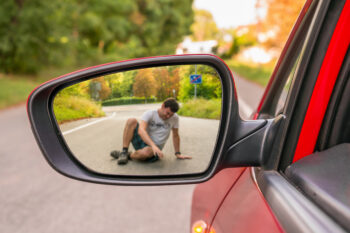In bustling cities and urban centers across California, pedestrian safety remains a significant concern. Each year, thousands of pedestrians are injured or tragically killed in accidents involving vehicles, making it crucial to identify the most dangerous intersections and understand the state’s requirements for ensuring pedestrian safety. Timothy J. Ryan & Associates, is committed to advocating for victims’ rights, addresses this pressing issue and encourages everyone to be proactive in promoting pedestrian safety.
The Alarming Reality of Pedestrian Accidents in California:
California, renowned for its sunny weather and vibrant streets, unfortunately, carries a heavy burden in terms of pedestrian accidents. As a highly populated state with a large number of vehicles and pedestrians sharing the roads, it’s not surprising that pedestrian accidents are a significant concern.
According to the California Office of Traffic Safety (OTS), pedestrian fatalities and injuries have been on the rise in recent years. The OTS reported that pedestrians accounted for nearly 25% of all traffic-related fatalities. These statistics highlight the urgency of addressing pedestrian safety and implementing effective measures to reduce accidents.
Identifying California’s Most Dangerous Intersections:
Identifying the most dangerous intersections for pedestrians is essential in developing targeted safety strategies. Several factors contribute to the high-risk nature of certain intersections, including traffic volume, vehicle speed, pedestrian activity, road design, and the presence of crosswalks and traffic signals.
California Highway Patrol and local law enforcement agencies regularly conduct traffic safety assessments to identify hazardous intersections. The findings help prioritize areas that require immediate attention to prevent accidents and improve pedestrian safety.
California’s Requirements for Pedestrian Safety:
To improve pedestrian safety and reduce accidents at dangerous intersections, California enforces strict requirements aimed at protecting pedestrians and promoting safe roadways. Some key requirements include:
Pedestrian Crosswalks and Signals: California law mandates the installation of marked crosswalks and pedestrian signals at appropriate locations. These ensure pedestrians have designated areas to cross busy roads safely.
Pedestrian Islands: At particularly wide intersections, pedestrian islands provide safe havens for pedestrians midway through the crossing. These islands separate traffic flow, allowing pedestrians to cross one direction of traffic at a time.
Speed Limits and Traffic Calming Measures: Strictly enforcing speed limits and implementing traffic calming measures, such as speed bumps and traffic circles, help reduce vehicle speeds near pedestrian-heavy areas, increasing safety for pedestrians.
Pedestrian Education: Public awareness campaigns and educational programs are essential in educating both drivers and pedestrians about safe practices and the importance of mutual respect on the roads.
Enhanced Visibility: Improved lighting and reflective materials at intersections enhance pedestrian visibility, reducing the chances of accidents, particularly during low-light conditions.
The Role of Personal Injury Attorneys in Pedestrian Accident Cases:
In the unfortunate event of a pedestrian accident, seeking legal representation becomes crucial for victims and their families. Personal injury attorneys like Timothy J. Ryan & Associates have the expertise and experience necessary to navigate the complexities
Such cases often involve determining liability, gathering evidence, negotiating with insurance companies, and, if necessary, representing clients in court. By seeking the assistance of dedicated legal professionals, victims can pursue rightful compensation for their injuries and losses.
Initiatives to Improve Pedestrian Safety:
Recognizing the urgent need to enhance pedestrian safety, various government agencies, community organizations, and advocacy groups have launched initiatives and campaigns across California. These initiatives focus on raising awareness, implementing safety measures, and conducting research to address the root causes of pedestrian accidents.
- Vision Zero: The Vision Zero initiative is a global movement that aims to eliminate traffic fatalities and serious injuries. Many cities in California have adopted Vision Zero programs, which prioritize safety measures, redesign hazardous intersections, and promote a culture of responsible road use to protect vulnerable road users like pedestrians.
- Complete Streets: California’s Complete Streets policy ensures that roadways accommodate all users, including pedestrians, cyclists, and public transit riders. By integrating features like sidewalks, bike lanes, and pedestrian crossings into street design, the state aims to make roadways safer and more accessible for all.
- Safe Routes to School: The Safe Routes to School program encourages walking and bicycling to school while implementing safety measures near educational institutions. By improving safety in school zones and along routes to schools, this initiative protects children as they travel to and from their educational institutions.
- Pedestrian Safety Enforcement Operations: Law enforcement agencies conduct targeted pedestrian safety enforcement operations to ensure compliance with traffic laws and identify risky behaviors. These operations act as deterrents to reckless driving and promote safer road habits among both drivers and pedestrians.
Engaging Technology for Pedestrian Safety:
Advancements in technology have introduced innovative solutions to enhance pedestrian safety on California’s roadways. These technological tools aim to reduce the risk of accidents and improve safety for all road users.
- Pedestrian Detection Systems: Many newer vehicles come equipped with pedestrian detection systems that use cameras and sensors to detect pedestrians in front of the vehicle. If a potential collision is detected, the system may issue warnings to the driver or even engage emergency braking.
- Intelligent Crosswalks: Some intersections are equipped with intelligent crosswalks that use traffic lights, signals, or even flashing LED lights to enhance pedestrian visibility and ensure safer crossings.
- Mobile Apps: Several mobile applications have been developed to assist pedestrians in navigating the safest routes and crossing points. These apps can provide real-time information on traffic conditions, pedestrian-friendly paths, and potential hazards.
Pedestrian safety is a shared responsibility that requires concerted efforts from both individuals and authorities. By identifying California’s most dangerous intersections, adhering to state safety requirements, and taking proactive measures, we can significantly reduce the number of pedestrian accidents and create safer roadways for everyone.
At Timothy J. Ryan & Associates, we stand by victims of pedestrian accidents, offering dedicated legal representation to seek the justice and compensation they deserve. Together, let us work towards a safer and more pedestrian-friendly California.
